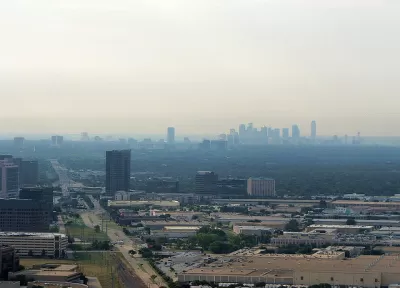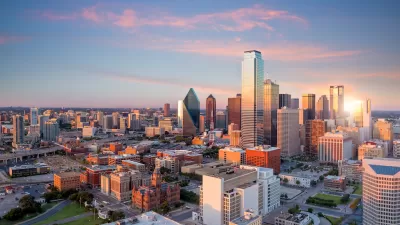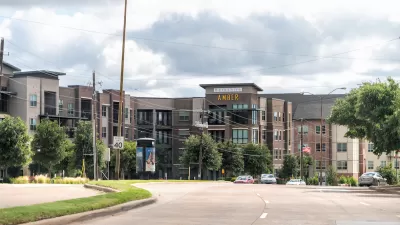Communities in south and west Dallas are working to introduce zoning reform that would reduce industrial pollution and hold companies accountable for their impacts on surrounding neighborhoods.

Patrick Sisson profiles the residents fighting to clean up the communities of southern and western Dallas. "Ringed by highways and dense with cement plants, warehouses, factories and landfills, these once-rural tracts of land are now the most contaminated in the city."
To fight polluters, residents, environmental activists and public health advocates have had to take on another powerful, mostly invisible foe: the zoning regulations that forced Black and brown communities on the wrong side of I-30 and the Trinity River to bear the brunt of industrial pollution.
Now, local activists are looking for ways to use zoning to their advantage. "'Zoning has been a tool to weaponize land against communities of color, and now communities of color are saying, wait, this is a tool we can use to restore our neighborhoods,' says Collin Yarbrough, a local activist and author of Paved A Way: Infrastructure, Policy and Racism in an American City, which explores Dallas’s legacy of economic segregation."
These efforts have gotten attention at City Hall, too. "In August 2021 the city launched Forward Dallas, an effort to reform future land use in the city. Citing the need to 'reevaluate existing land use policies and adopt new, more equitable and sustainable strategies,' the city’s rezoning initiative promises to acknowledge the systemic failures and injustices that drew its zoning map, and fix them."
The article points out that "The history of zoning and environmental injustice intersects with property values and the long history of redlining. The least expensive neighborhoods, those with fewer resources and support, tend to be where lower-income residents and communities of color can set down roots, as well as where highways and polluting industries are directed." Advocates are using science-based evidence to push for zoning reform that would regulate industrial uses to protect vulnerable neighborhoods.
According to Dallas director of planning and urban design Julia Ryan, "the planning department is reaching out to neighborhood groups and hopes to have a draft plan by the middle of next year." Ryan "intends to study the plans developed by different neighborhoods, establish land use policies that include buffers for certain uses, and 'look at areas from an environmental justice standpoint and follow up with recommendations for zoning changes.'"
FULL STORY: In Dallas, the Toxic Legacy of Zoning Lingers

Alabama: Trump Terminates Settlements for Black Communities Harmed By Raw Sewage
Trump deemed the landmark civil rights agreement “illegal DEI and environmental justice policy.”

Planetizen Federal Action Tracker
A weekly monitor of how Trump’s orders and actions are impacting planners and planning in America.

The 120 Year Old Tiny Home Villages That Sheltered San Francisco’s Earthquake Refugees
More than a century ago, San Francisco mobilized to house thousands of residents displaced by the 1906 earthquake. Could their strategy offer a model for the present?

In Both Crashes and Crime, Public Transportation is Far Safer than Driving
Contrary to popular assumptions, public transportation has far lower crash and crime rates than automobile travel. For safer communities, improve and encourage transit travel.

Report: Zoning Reforms Should Complement Nashville’s Ambitious Transit Plan
Without reform, restrictive zoning codes will limit the impact of the city’s planned transit expansion and could exclude some of the residents who depend on transit the most.

Judge Orders Release of Frozen IRA, IIJA Funding
The decision is a victory for environmental groups who charged that freezing funds for critical infrastructure and disaster response programs caused “real and irreparable harm” to communities.
Urban Design for Planners 1: Software Tools
This six-course series explores essential urban design concepts using open source software and equips planners with the tools they need to participate fully in the urban design process.
Planning for Universal Design
Learn the tools for implementing Universal Design in planning regulations.
Clanton & Associates, Inc.
Jessamine County Fiscal Court
Institute for Housing and Urban Development Studies (IHS)
City of Grandview
Harvard GSD Executive Education
Toledo-Lucas County Plan Commissions
Salt Lake City
NYU Wagner Graduate School of Public Service





























